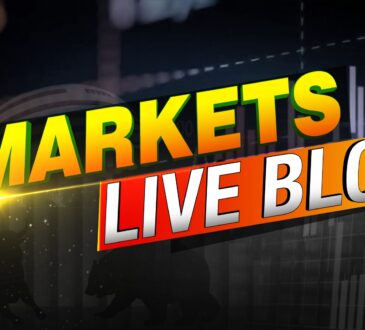
NEW YORK — Wall Street drifted through mixed trading on Friday to put a quiet end to another rocking week.
The S&P 500 finished nearly unchanged for the day, down 0.36, or less than 0.1%, at 4,719.19. But it’s still hanging within 1.6% of its all-time high set early last year, and it closed out a seventh straight winning week for its longest such streak in six years.

The American flag is shown June 29, 2022, at the New York Stock Exchange.
The Dow Jones Industrial Average, which tracks a smaller slice of the U.S. stock market, rose 56.81 points, or 0.2%, to 37,305.16 and set a record for the third straight day. The Nasdaq composite climbed 52.36, or 0.4%, to 14,813.92.
Costco helped lead the market with a 4.4% gain. It reported stronger results for the latest quarter than analysts expected and said it will send $6.7 billion in cash to its shareholders through a special $15 dividend.
People are also reading…
Stocks overall bolted higher this week after the Federal Reserve seemed to give a nod toward the hopes that have sent Wall Street screaming higher since Halloween. Fed Chair Jerome Powell at a news conference on Wednesday did not forcefully push back on traders’ expectations that inflation has cooled enough for the central bank to shift to cutting interest rates after yanking them dramatically higher since early last year.
The S&P 500 has jumped roughly 15% since late October on rising hopes for just such a pivot. Lower rates not only give a boost to prices for all kinds of investments, they also relax the pressure on the economy and the financial system.
Hopes for several cuts to rates from the Fed in 2024 have sent Treasury yields tumbling in the bond market, which in turn releases pressure on the stock market.
The 10-year yield eased further on Friday. It slipped to 3.91% from 3.92% late Thursday. It had been above 5% in October and at its highest since 2007.
With inflation down from its peak, Bank of America is forecasting 152 rate cuts from central banks around the world in 2024. That would be the first year since 2020 that cuts have outpaced hikes.
Of course, some more cautious investors say markets have gotten ahead of themselves in their ebullience. The big moves seem to be predicated on the Federal Reserve pulling off what was considered a nearly impossible task not long ago.
The Fed’s goal has been to slow the economy and grind down prices for investments enough through high interest rates to get inflation under control. It then has to loosen the brakes at the exact right time. If it waits too long, the economy could fall into a painful recession. If it moves too early, inflation could reaccelerate and add misery for everyone.
The Strongest Post-Election Stock Markets in History
The Strongest Post-Election Stock Markets in History

Photo Credit: oneinchpunch / Shutterstock
The U.S. political landscape has become more polarized than ever before. In fact, a study of developed democracies around the world found that the political polarization trend in the U.S. is more dramatic than in any other country in the study. In the months prior to the 2020 election, the overwhelming majority of both Biden and Trump supporters responded that they would “be very concerned about the country’s direction” and believed that it would cause lasting harm to the U.S. if their opponent won. This amount of turmoil surrounding presidential elections not only influences Americans’ everyday decisions, but the volatility can be seen in the U.S. stock market as well.
Voter turnout is the highest it has been in 120 years

As recent presidential elections have become increasingly contentious, certain issues facing Americans are coming into focus. The economy has always been a hot-button issue for American voters, but recent inflation and stock market volatility have made it an increasingly important concern. This is especially true for Republicans, who consider the economy the most important issue facing our country.
The combination of increased political polarization alongside a rocky economy has likely contributed to the record levels of voter turnout observed in recent years. Since bottoming out at just under 52% in 1996, voter turnout has steadily risen to nearly 67% during the 2020 election cycle. This level of civic engagement has not been seen since 1900—a sign of heightened voter focus.
Stock gains tend to even out over time

Despite increasing polarization around elections, one political party does not appear to have a significantly greater impact on the stock market than another. In the short term, the post-election stock market appears to slightly favor Republicans, with six out of the nine since 1932 producing positive two-week returns. This may be due to the fact that Republicans tend to favor less government regulation in business, and are often perceived to prioritize business and economic interests.
Over time, however, there is not a clear difference in the stock market when one political party is elected over another. In fact, there have only been five out of the 23 election cycles since 1932 that produced negative returns in the four years after election day. And of the five elections with the largest market price increases during the four years after election day, three were Democratic presidents—Franklin D. Roosevelt in 1932 and Bill Clinton in 1992 and 1996. Republican presidents Dwight D. Eisenhower (1952) and Ronald Reagan (1984) round out the top five.
To determine the strongest post-election stock markets in history, researchers at U.S. Money Reserve ranked post-presidential election stock markets from 1896 to 2020 according to the percentage change in the Dow Jones Industrial Average® stock market index two weeks after each election. In the event of a tie, the presidential election with the larger percentage change from election day to inauguration day was ranked higher.
Here are the strongest post-election stock markets in history.
14. 1972 presidential election

- Stock market price change (2 weeks post-election): +2.9%
- Stock market price change (inauguration day): +4.2%
- Stock market price change (4 years post-election): -1.9%
- Elected president: Richard Nixon (Republican)
- Runner-up: George McGovern (Democratic)
13. 1952 presidential election

- Stock market price change (2 weeks post-election): +2.9%
- Stock market price change (inauguration day): +6.6%
- Stock market price change (4 years post-election): +83.3%
- Elected president: Dwight D. Eisenhower (Republican)
- Runner-up: Adlai Stevenson II (Democratic)
12. 2016 presidential election

- Stock market price change (2 weeks post-election): +4.2%
- Stock market price change (inauguration day): +8.6%
- Stock market price change (4 years post-election): +47.5%
- Elected president: Donald Trump (Republican)
- Runner-up: Hillary Clinton (Democratic)
9. 1904 presidential election

- Stock market price change (2 weeks post-election): +5.4%
- Stock market price change (inauguration day): +14.7%
- Stock market price change (4 years post-election): +25.2%
- Elected president: Theodore Roosevelt (Republican)
- Runner-up: Alton B. Parker (Democratic)
8. 1908 presidential election

- Stock market price change (2 weeks post-election): +5.8%
- Stock market price change (inauguration day): -1.3%
- Stock market price change (4 years post-election): +8.9%
- Elected president: William Howard Taft (Republican)
- Runner-up: William Jennings Bryan (Democratic)
7. 1996 presidential election

- Stock market price change (2 weeks post-election): +5.9%
- Stock market price change (inauguration day): +13.3%
- Stock market price change (4 years post-election): +81.7%
- Elected president: Bill Clinton (Democratic)
- Runner-up: Bob Dole (Republican)
5. 1980 presidential election

- Stock market price change (2 weeks post-election): +6.5%
- Stock market price change (inauguration day): +1.4%
- Stock market price change (4 years post-election): +31.2%
- Elected president: Ronald Reagan (Republican)
- Runner-up: Jimmy Carter (Democratic)
4. 1924 presidential election

- Stock market price change (2 weeks post-election): +6.6%
- Stock market price change (inauguration day): +18.6%
- Stock market price change (4 years post-election): +147.9%
- Elected president: Calvin Coolidge (Republican)
- Runner-up: John W. Davis (Democratic)
3. 1928 presidential election

- Stock market price change (2 weeks post-election): +10.2%
- Stock market price change (inauguration day): +23.9%
- Stock market price change (4 years post-election): -74.9%
- Elected president: Herbert Hoover (Republican)
- Runner-up: Al Smith (Democratic)
2. 2020 presidential election

- Stock market price change (2 weeks post-election): +10.6%
- Stock market price change (inauguration day): +15.8%
- Stock market price change (4 years post-election): +29.8%
- Elected president: Joe Biden (Democratic)
- Runner-up: Donald Trump (Republican)
1. 1900 presidential election

- Stock market price change (2 weeks post-election): +13.4%
- Stock market price change (inauguration day): +11.0%
- Stock market price change (4 years post-election): +8.8%
- Elected president: William McKinley (Republican)
- Runner-up: William Jennings Bryan (Democratic)

